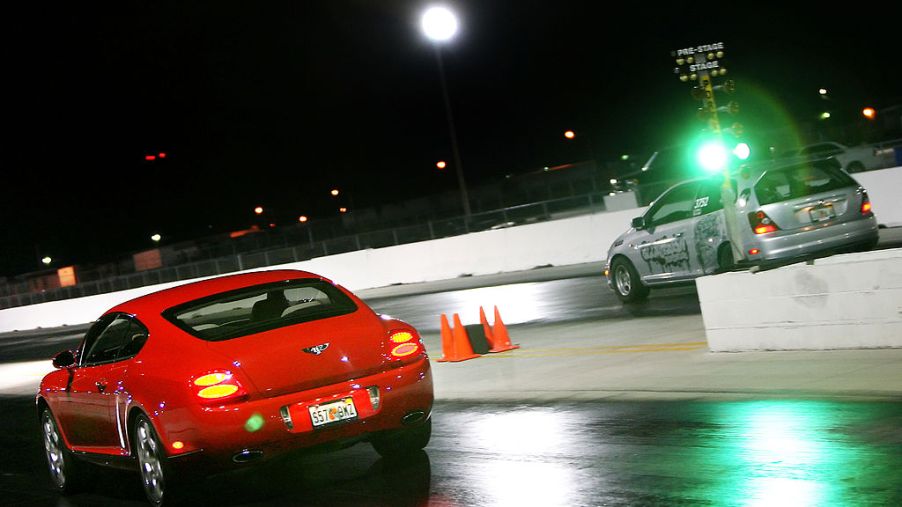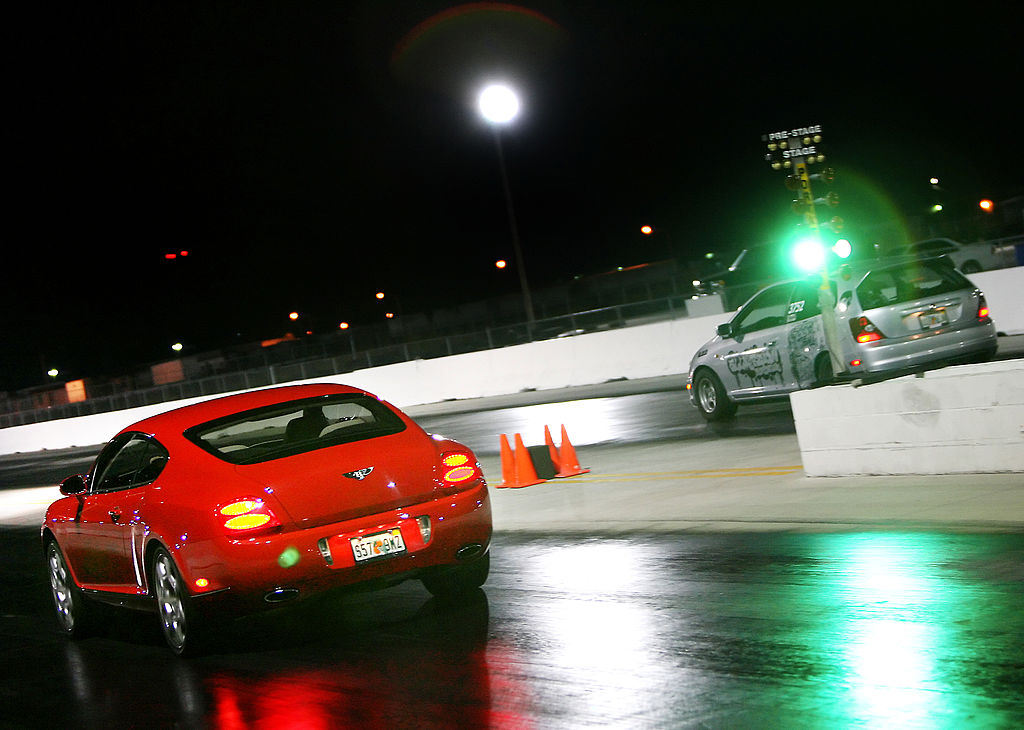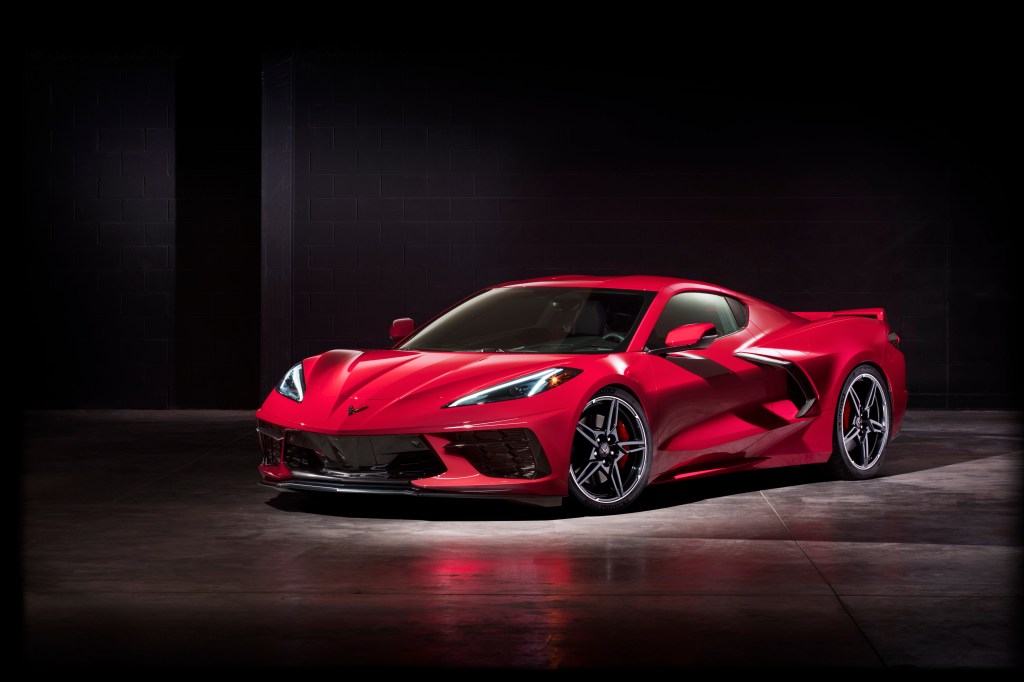
Why 0-60 Times Don’t Matter in the Real World
Whether you’re talking cars or motorcycles, the most-common performance metric is the 0-60 time. It’s what helped sell a lot of people on electric cars. And it’s not like there are too many places you can legally go 250+ mph. But, in many ways, the 0-60 time isn’t actually the best yardstick of a car’s speed. Especially when it comes to real-world stoplight launches.
Getting the best 0-60 time isn’t easy
As veteran auto journalist Jason Cammisa explained on The Smoking Tire podcast (NSFW language warning), recording 0-60 times is a complicated process.
Every published 0-60 time is basically an average of several runs. And, as Road & Track explained in its March/April 2020 issue, these runs aren’t gentle. Smoked clutches, broken engine mounts, and generally-abused transmissions are far from uncommon side-effects.

Also, measuring 0-60 times isn’t done with a dude and a stopwatch anymore, as Hagerty explains. Instead, publications use equipment like the GPS-based Racelogic Vbox to accurately measure distance and acceleration. Then, as Motor Trend explains, they use standardized formulas to ‘correct’ for the weather and altitude.
Furthermore, Autoblog and Edmunds.com report that not every publication measure 0-60 times exactly the same. Some, like Car and Driver, recently started doing, include ‘rollout’. This is designed to mimic a drag strip, where light beams are used to start timing clocks. The first beam is a pre-staging warning, with the second light at the starting line actually starting the lock. The distance between the two is the rollout distance, which cuts out a few fractions of a second from the run.
In addition, as Engineering Explained and Throttle House have explained, the most-powerful cars often struggle to effectively put their power onto the ground. The 840-hp Dodge Demon, for example, needs a specially-prepped drag surface to achieve its best 0-60 time. On a normal street, it won’t get close to its published 2.3 second time.
And it’s not just the road surface that makes 0-60 times somewhat pointless in the real world.
0-60 times are rarely real-world accurate
Gasoline and diesel engines need to be revved to build power. Turbocharged engines doubly-so, to generate boost. That usually requires holding the car on its brakes, if it’s an automatic, or leaving it in neutral if it’s a manual. But, in the real world, you’re rarely sitting at a traffic light revving your engine. Instead, when the light turns green, and you press the gas pedal, the engine’s idling. Meaning, it has to rev up, and if it has turbos, they have to spool, creating lag. Then shifting gets involved.
To accelerate to 60, most cars have to shift at least once. If they have manuals, that introduces human error. And, if you own the car you’re driving, you’re probably not going to shift hard or violently, because you don’t want to damage the car. So, your shifts will be somewhat slow. And if the car has an automatic or dual-clutch, R&T reports most are programmed for smooth shifts, not fast ones.
Launch control programs do help with this, allowing the car to build power and/or boost while letting the car’s computer calculate the best shift and drivetrain settings. But as InsideEVs points out, how many times do you activate it at the average traffic light? Even then, some launch controls have a built-in delay, further affecting the results. And that’s before traction control gets involved, cutting power to keep the car from sliding.
Electric cars are a little better at this, as they don’t have to deal with turbo lag or clutch dumps. Many also only have 1 gear, eliminating shifting. But, as Car and Driver demonstrated in its Model S-Taycan comparison, many EVs experience performance degradation as their motors and batteries heat up. Launch too often, and that 2.5-second 0-60 time starts turning into a 5-second time.
Why 5-60 time is a better performance indicator
There is, though, a slightly better way of figuring out if the car next to you can beat you off the line. That’s by comparing 5-60 times.
To better mimic real-world off-the-line starts, Car and Driver, and then R&T began measuring 5-60 rolling starts. By rolling the car in its lowest gear, and using a switch on the gas pedal to precisely measure timing, this eliminates the abuse a hard launch requires. It also better simulates what happens IRL, and allows better comparison of different cars’ engine and transmission tuning. Carwow does the same with its rolling drag races.

As a result, even though Car and Driver reported the 2020 Corvette and Porsche 911 GT3 RS have the same 0-60 time, the Corvette would actually be slightly quicker than the 911. That’s because the Corvette’s 5-60 time is 0.2 seconds less than the 911’s.
Follow more updates from MotorBiscuit on our Facebook page.


